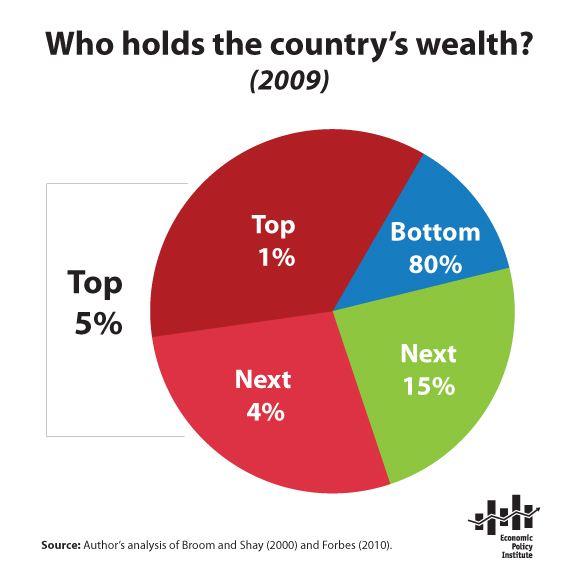The distribution of wealth in the United States is even more unequal than the distribution of wages and income. The Figure, from EPI’s new paper, The State of Working America’s Wealth. shows how wealth is divided among American households. It merges survey data on household wealth with changes in aggregate asset prices to estimate how wealth has been affected by the bursting of the housing bubble and the Great Recession. It shows that in 2009, the top 5% of wealth holders claimed 63.5% of the country’s wealth. The bottom 80%, by contrast, held just 12.8% of the country’s wealth.

Wealth, or net worth, refers to total assets, such as bank account balances, savings, and real estate, minus total liabilities, such as mortgages, credit card and other debt, and outstanding medical bills. Wages and income are important measures of economic well-being, but wealth offers another valuable perspective on families’ financial security and ability to withstand job losses or other economic setbacks. The State of Working America’s Wealth notes that these large disparities in wealth explain, in part, why the economic recovery feels different to different people: “Typical families and workers continue to struggle against high rates of unemployment, stagnating wages, and foreclosure,” while “the wealthy have enjoyed significant gains in the stock market, and benefited from corporate profits.”
